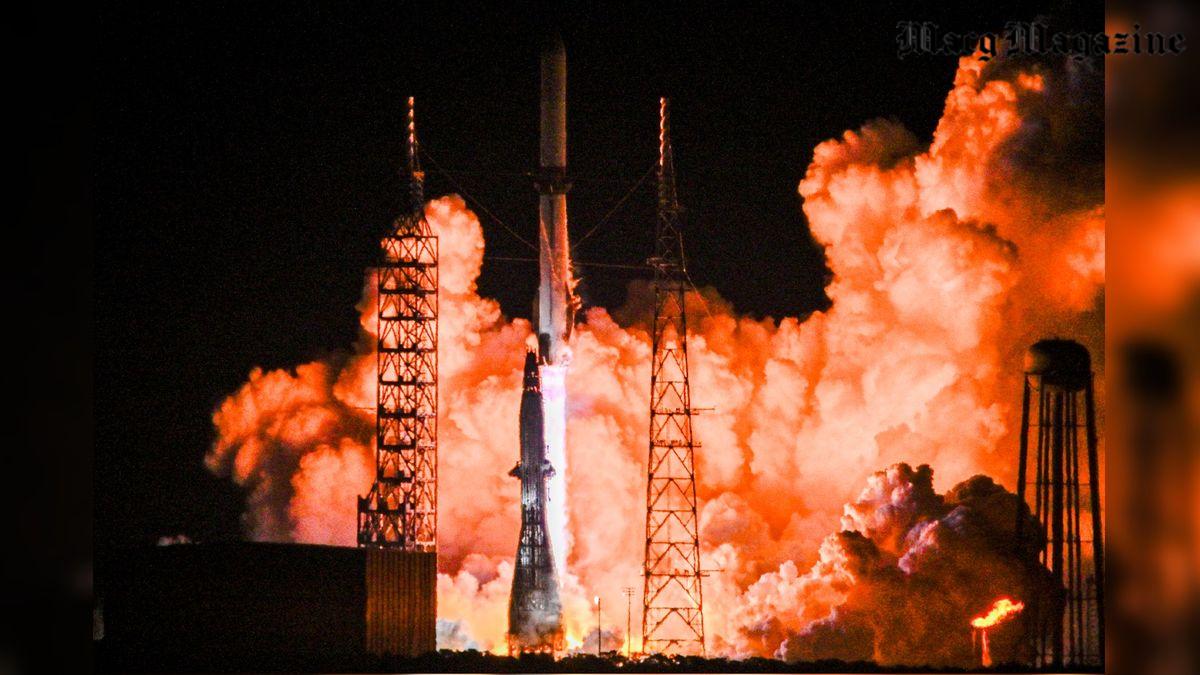On January 16, 2025, at 2:03 a.m. EST, Blue Origin’s highly anticipated New Glenn rocket soared into the skies from Cape Canaveral Space Force Station in Florida. This successful launch marks a significant milestone for Blue Origin, despite facing several delays leading up to the moment of liftoff. While the rocket’s first-stage booster was lost during its descent, the mission achieved its primary goal of reaching orbit, demonstrating the potential of Blue Origin’s latest technological advancements.
Launch Day Excitement
The atmosphere during the launch was charged with excitement, as onlookers gathered to witness the historic event. Jeff Bezos, the founder of Amazon and head of Blue Origin, was present at Mission Control to oversee this critical moment for his space company. This mission, known as NG-1, not only showcased Blue Origin’s determination to compete in the commercial spaceflight arena but also laid the groundwork for future projects, including NASA’s Artemis program.
The Journey to Orbit
The New Glenn rocket, which stands an impressive 320 feet tall (about as tall as a 30-story building), is equipped with seven powerful BE-4 engines. These engines roared to life, propelling the spacecraft toward the stars. Approximately 12.5 minutes post-launch, the rocket successfully reached its intended orbit, a remarkable achievement in itself. However, the mission’s complexity meant that not everything went as planned. Blue Origin aimed to achieve a recovery of the booster for reuse, a key aspect of the company’s strategy to promote sustainable space travel.
What Went Wrong?
Despite the overall success of the launch, the booster, playfully named “So You’re Telling Me There’s a Chance,” was lost during its descent phase, which was disappointing for the team at Blue Origin. Nonetheless, it was a valuable learning experience, and the data collected during the launch will contribute to improving future missions. The lessons learned from both successes and failures play a crucial role in advancing space technology.
Looking Ahead
The successful orbit of the New Glenn rocket opens up new doors for Blue Origin. The company is not only set to support NASA’s Artemis program, which aims to return humans to the Moon, but it is also expected to transport cargo and astronauts to various destinations in space. Future missions will include launching Blue Origin’s own Blue Moon landers, a significant step towards establishing a human presence on the lunar surface.
Future Launch Plans
After this major success, Blue Origin has ambitious plans for more launches in the coming year. They are working to boost their manufacturing capabilities and increase the frequency of their launches. By ensuring that their rockets can be reused multiple times, Blue Origin hopes to streamline space travel and make it more accessible.
| Event | Date | Time (EST) |
|---|---|---|
| Initial Launch Target | January 10, 2025 | 1:00 a.m. |
| Rescheduled Launch Due to Weather | January 16, 2025 | 2:03 a.m. |
Conclusion: A Step Towards the Stars
This first launch of the New Glenn rocket is not just a big win for Blue Origin but a significant leap forward for the entire space industry. As companies like Blue Origin, SpaceX, and others continue to innovate, we are inching closer to a future where space travel may become routine. Young dreamers today could very well be the astronauts of tomorrow!

